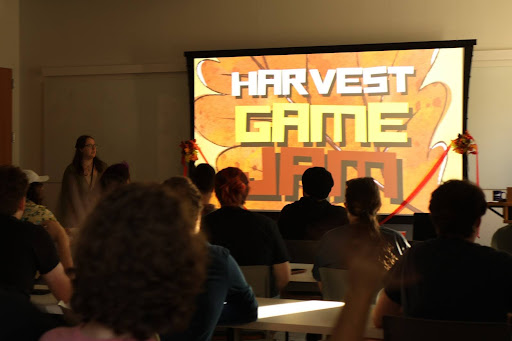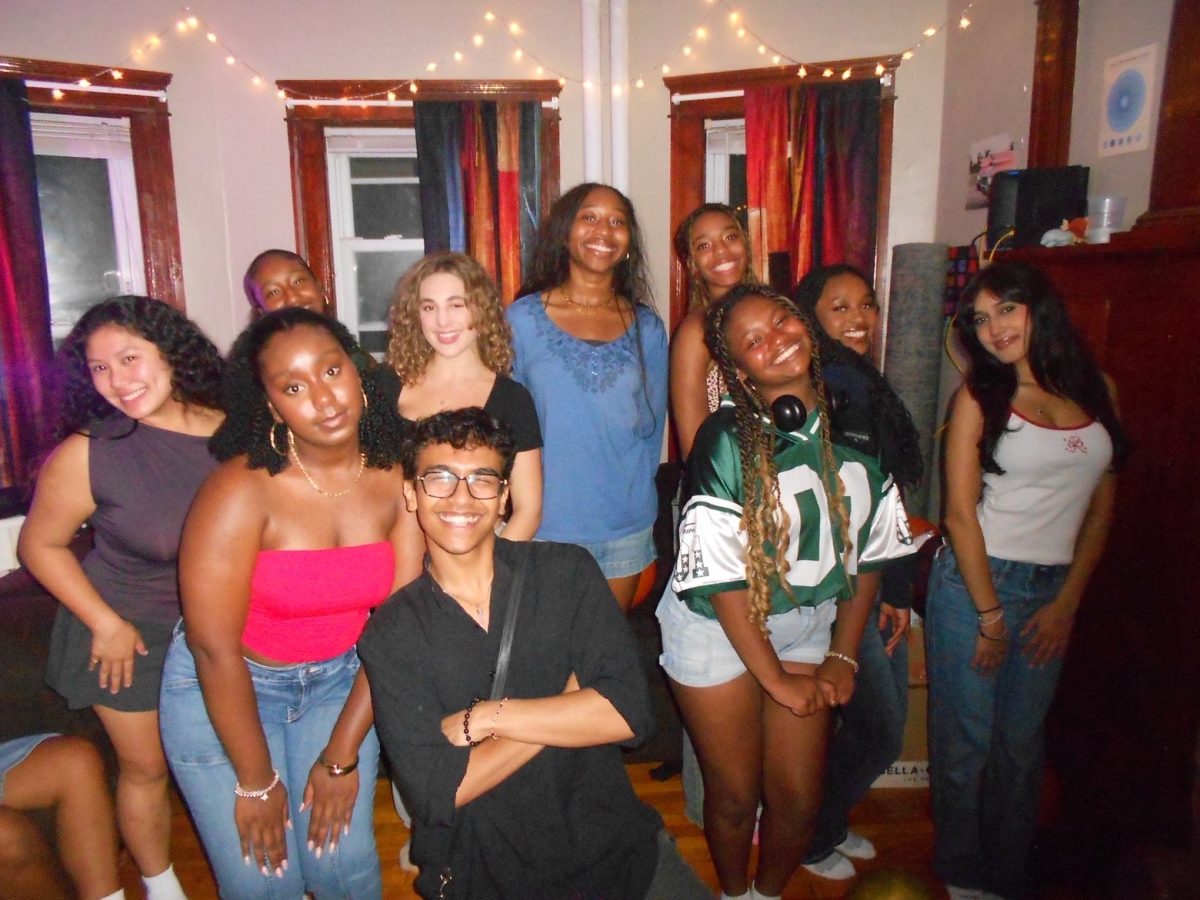International Game Developers Association leadership weighed in on the process of organizing and purpose of participating in a game jam.
With the incorporation of Becker College’s venerated game design program into Clark’s academic offerings in 2021, as well as the construction of the new Center for Media, Arts, Computing, and Design, it’s no surprise that Clark has a very active chapter of the International Game Developers Association (IGDA).
The IGDA is a nonprofit organization focused on fostering connections between developers of all kinds, from programmers to artists to localization writers. Over the weekend, from September 13 to 15, Clark’s IGDA chapter gathered numerous developers to inaugurate the 2024 Fall semester with their Harvest Game Jam. The Scarlet was able to speak with IGDA Vice President Alex Supron ’25 and Event Coordinator Maya Patten ’27 on the planning and organizing side of the game jam.
Please note that the questions and answers have been modified for clarity and conciseness.
For the uninformed, can you briefly explain what a game jam is?
SUPRON: Yeah, so a game jam is basically an event that happens over a set period of time. It’s not restricted to any amount of time, but we run [for] 48 hours, so it’s a set amount of time where developers get to create a game in that amount of time that they then have to present afterwards. It can be competitive, it can be not competitive, but [this game jam has] awards for the best.
Do you have plans for any more this academic year?
SUPRON: We run two to three game jams every semester, so you’ll be seeing three to six throughout the entire [academic] year.
Is there anything you find particularly rewarding about the organizing process or putting it together?
SUPRON: I like the club stuff. It’s just fun.
PATTEN: Yeah, I think that when you’re organizing it, you obviously get to brainstorm different themes and stuff, and it allows you not only to see what people in the program like to make games on, but also [what] you can make in the discussion process. You can come up with ideas for things for your classes and stuff, which is always really fun.
SUPRON: On the organizing side, it’s just fun to provide that opportunity for students. We’re helping people.
How did you come up with the theme for this jam?
PATTEN: We have event teams and me and two other people on one half of the event team kind of just sat in a room a few times and brainstormed different themes, made like a list of things that we could use this time and next time, and we kind of just all discussed and came to one that we thought would be most interesting for everyone to make a game on.
On top of getting a look into the logistical side of the event, IGDA President and game jam participant Brien Rondeau, MFA ’25, took time during the closing hours of the jam to give some insight into the process of making a game in just 48 hours.
What was the process of developing a game in such a short time frame like?
RONDEAU: I always start with a pretty extensive sit down with the entire team where we just sort of talk about the theme and the first ideas that come to our head. So we were just talking about other games that we thought had similar vibes to the theme. So we talked about Mr. Sleepyman, which is a small indie platformer game where you play, like, a little sleepy dude in a dream world. We talked about Don’t Wake Daddy, which is like a board game from the 90s, just sort of the mechanics and how they lend themselves to the theme, and then we just sort of focused on the one that we all thought was the most fun and exciting to work on.
Is there anything you’re particularly proud about with this game?
RONDEAU: We did a lot of art for it, which was, like, because normally we will either stick in 3D or 2D, but this time we did both, because we have the mazes and we have the 3D environment. So I’m pretty proud of the art team. We outputted a ton of stuff in a really quick amount of time and it all looks really good, in my opinion.
Do you think there are any particular benefits, even for people who maybe aren’t super experienced in coding, to doing a game jam? Do you think there’s any kind of skills that can be gained here?
RONDEAU: Yeah, definitely. I think a lot of traditional artists, and I’m an artist, so maybe I’m coming more from an art perspective, but I think a lot of traditional artists could learn a lot from how quick you have to iterate in a game jam, where you might make the background for a menu, for instance, and then everything about the menu changes because the entire idea shifts, because you’re running out of time and you have to learn how to really quickly fix that piece of art so that it works for the new menu. And I think that learning how to make your art as non-destructible as possible; meaning it’s easily changed without fundamentally changing the art, is really important and super helpful. If you’re coming from, like, if you’ve only ever painted before, it’s a different workflow, but it’s a really great way to dip your toes into starting digital art.
Would you recommend doing a game jam for just anyone?
RONDEAU: I think you’ll definitely be thrown into the deep end, but the only way to get ready to do a game jam is to have already done a game jam. So you just should do it, and it might not be the best experience you’ve ever had, if you’ve never done anything [like a game jam], but you’ll make some friends and you’ll get a cool game out of it, or at least have tried, and that’s, it’s better than nothing.
In the end, the jam had 11 teams working, some in groups and some solo. The resulting games were judged by a panel of IGDA affiliates from the gaming industry; one of Demiurge’s 3D artists Kevin Lyon, former Unity developer Emily Ryan, New Blood lead developer support Scott Gurney, and Epic Games associate producer Robby Williams. Sleep Shack, developed by Ronan Wolf ’27, took home ‘Best Overall’, with Dream Shift by Ojany Santos ’27, Chris Kuntz ’27, Lucian Terhorst ’27, Muhammad Suhayb Malik ’27, Matthew Zaluski ’27 and Justin Smith ’27 as the runner-up.
‘Best Visuals’ went to Oneirophobia by Nino Zappala ’28, Sammi Bosque ’25, Bianca Brezinsky ’26, Nicholas Lyons ’28, Asher Rosenfield ’28 and Celeste Rocchio ’26, and Wake the Cluck Up by Jacob Berman ’27, Josh Kahn ’25, Griffin VanderGheynst ’25, Jack Wallace ’27 and David Rosengard ’28 was voted ‘Most Out of the Box’. People interested in playing the games produced during the Harvest Game Jam can find them all on itch.io.



